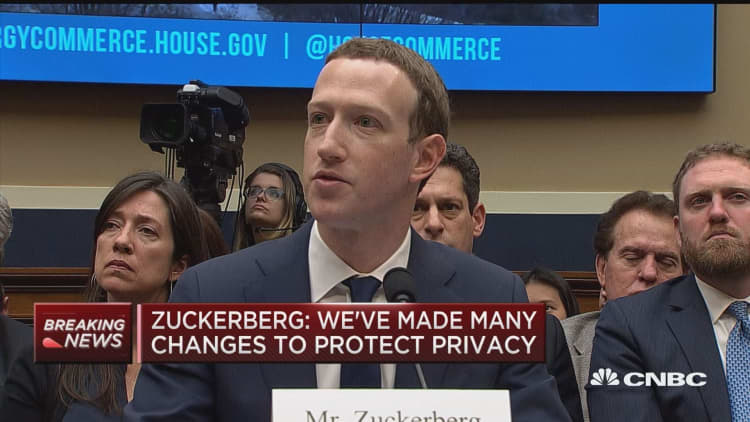During his testimony before Congress on Tuesday and Wednesday, Facebook CEO Mark Zuckerberg has repeatedly suggested that Facebook users have complete control over the information they share with Facebook.
But it's much more complicated than what he implies.
Here's an example of a talking point Zuckerberg has been repeating in various forms:
"It's really important for the service that people understand what they're doing and signing up for and how the service works. We have laid out all of what we do in the terms of service because that's what's legally required for us," Zuckerberg said. "Every single time that you share something on Facebook or one of our services, right there is a control in line where you control who you want to share with."
It's true that when you post a picture or thought to Facebook, you can choose whether you're sharing it with the public, friends, specific friends or only with yourself.
This is what he's referencing:
But Zuckerberg's suggestion that this dialog box gives users complete control is misleading.
This is why Zuckerberg was called to Capitol Hill in the first place: Users haven't had and still don't have an easy way to control who sees their data after it's been posted to Facebook.
Cambridge Analytica, for example, was able to obtain information on as many as 87 million Facebook users after just 270,000 people downloaded and interacted with a quiz. (Here's how to find out if you were one of them.)
While this occurred several years ago, and Facebook says it has made changes to prevent this sort of leak, there are more than 86 million people who never intended to have their data shared with a third party. However, because a friend of those users took a quiz, that data was shared elsewhere.
At the time, there was no setting to prevent that.
Facebook is still trying to figure out other firms that might have gotten access to personal user data in similar ways, which means it has no idea who might currently have your private information. For example, the company suspended another data analytics firm named CubeYou only after CNBC revealed that the firm was running a quiz that was also collecting user data.
In order to protect yourself better from these sorts of invasions, you do need to dig deeper — much deeper than Zuckerberg suggests — into your Facebook settings.
What to do
You need to manage the applications that can see your data, opt out of settings that provide your data to advertisers, and make other tweaks to your privacy settings. You need to do this:
1. Manage the apps that have access to your Facebook data
- On desktop or in the mobile app, tap the drop-down menu on the top-right side of Facebook and select "Settings."
- Select the "Apps" option. This is on the left side of the page on desktop. On mobile, simply scroll down the settings page.
- Select "Edit" to control privacy settings, or delete to remove the apps entirely.
2. Opt out of settings that provide your data to advertisers
- On desktop or in the mobile app, tap the drop-down menu on the top-right side of Facebook and select "Settings."
- Select "Ads" on the left.
- Open the "Your Information" tab and turn off every setting that shares your relationship status, employer, job title, education and interests.
- Tap "Ad Settings" and turn off the option to share your website, app and social actions with advertisers.
3. Change your privacy settings
- On desktop or in the mobile app, tap the drop-down menu on the top-right side of Facebook and select "Settings."'
- Select "Privacy" from the left menu.
- Make sure only friends can see your friends list, your email address, your phone number and your Facebook profile.
Facebook, for its part, needs to make these options much easier to find, a point that both the House Energy and Commerce Committee and the Senate Judiciary and Commerce committees have been trying to make to Zuckerberg over the past two days.
WATCH: Zuckerberg says same privacy controls available everywhere



